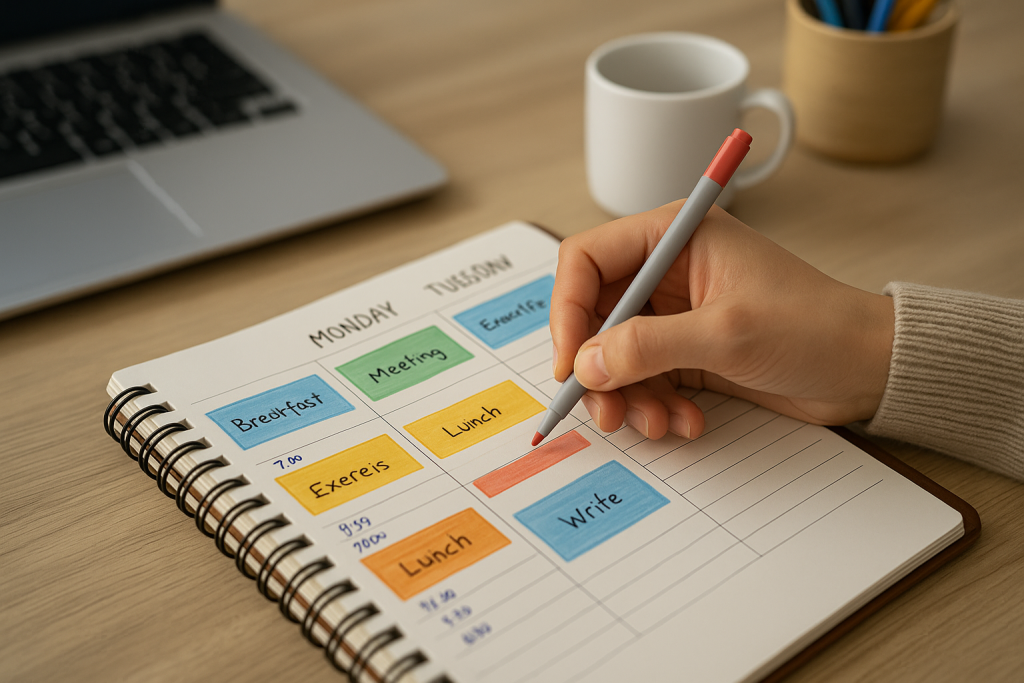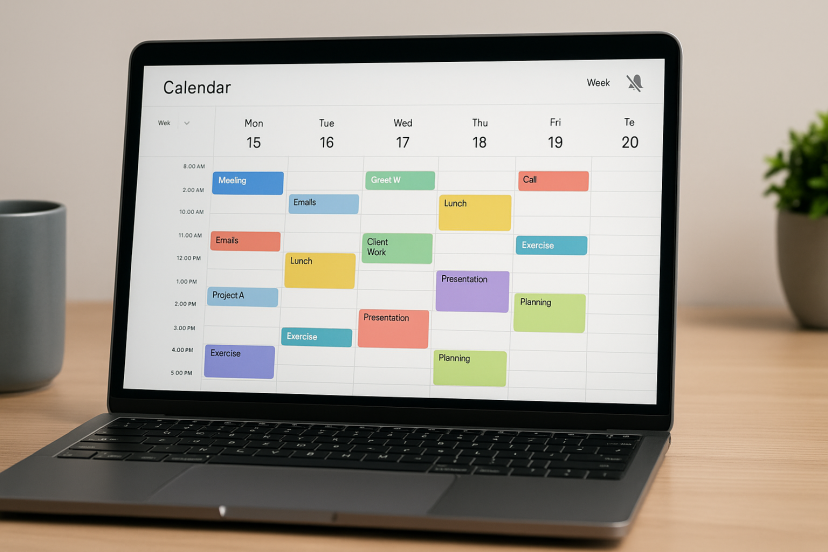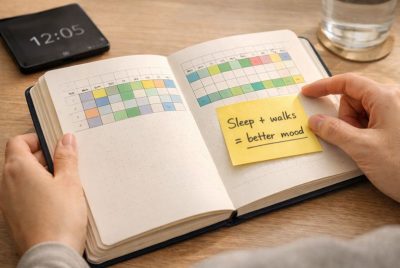Time Blocking: How to Take Control of Your Day Without Burning Out
We may earn a commission for purchases made using our links. Please see our disclosure to learn more.
Ever feel like your day is slipping through your fingers, no matter how many to-do lists you write? If so, time blocking might be the missing piece you need. In the first few days of using this method, many people notice a surprising boost in focus—and a lot less stress. Here’s everything you need to know about time blocking, from science-backed benefits to practical, real-life tips and product recommendations that actually work.
Introduction: What Is Time Blocking and Why Does It Matter?
Time blocking is a straightforward yet effective way to organize your day. Rather than jumping from task to task as things come up, you assign specific “blocks” of time to focus on one activity at a time. This approach encourages deeper concentration, cuts down on multitasking, and helps you protect your personal boundaries.
It’s not just a trendy productivity hack—time blocking is used by everyone from busy professionals and students to parents juggling hectic schedules. By planning your day this way, you can regain control, get more done, and keep burnout at bay. If you’re tired of feeling scattered after a day of constant task-switching, this method offers a much-needed sense of order and calm.
The Science Behind Time Blocking
Time blocking isn’t simply about staying organized—it’s rooted in solid neuroscience. Studies reveal that juggling multiple tasks can leave you mentally exhausted and more prone to mistakes. On the other hand, giving your full attention to one task at a time—also known as single-tasking—boosts your efficiency and lowers stress levels.
For example, research highlighted in The Journal of Experimental Psychology shows that grouping similar tasks together helps people work faster and with greater accuracy. Simply put, your mind works best when it can settle into a focused routine, which is exactly what time blocking provides.

What the Science Says About Time Blocking
Time blocking isn’t just a trendy productivity trick—there’s real research backing up its effectiveness. If you’re still on the fence, check out what the experts have found:
Monotasking and Mental Efficiency
A compelling review from Harvard Health shows that focusing on one task at a time (the core of time blocking) can actually lower your mental load and help you complete tasks faster. This “monotasking” approach not only minimizes errors but also helps keep your stress levels in check. If you’ve ever felt frazzled trying to juggle too much at once, you’re not imagining it—your brain really does work better when you single-task.
Time Blocking for Less Stress and More Productivity
According to Verywell Mind’s review on time blocking, organizing your day into focused blocks doesn’t just help you get more done. It also reduces stress and procrastination by providing clear structure and built-in breaks. Their coverage highlights studies showing that people who batch their work and schedule specific time for each task make fewer mistakes and finish tasks more efficiently.
These findings support what many time blockers already know: setting aside intentional time for each activity isn’t just smart—it’s science-backed.
Step-by-Step Guide to Time Blocking Your Day
Ready to give time blocking a real shot? Here’s how to get started (no fancy tools needed):
Identify Your Priorities
Start by listing out everything you need (and want) to do—work projects, meetings, errands, downtime, and even meals. Highlight your most important tasks. These are your “big rocks” that deserve dedicated blocks.
If you’re not sure where to start or how to choose what truly matters, learning how goal setting can lead to success is a powerful first step. Check out this practical guide on setting and achieving your goals for tips that make prioritizing your tasks even easier.
Break Down Your Day Into Blocks
Next, look at your calendar and divide the day into blocks—anywhere from 15 minutes to 2 hours, depending on the task. Assign each block a single focus, whether it’s deep work, meetings, creative time, or a walk outside. Remember to include regular breaks in your daily schedule!
Tip: Use color-coding or bold headings to visually separate blocks. You’ll see at a glance what’s next.
Set Boundaries and Minimize Distractions
This step makes all the difference. Once a block starts, treat it like an appointment you can’t miss. Turn off notifications, close extra tabs, and let others know when you’re not available. At the end of the block, switch tasks—even if you’re not “done.” That’s how you keep your day moving and avoid burnout.
Time Blocking vs. To-Do Lists: Which Works Best?
To-do lists can help you track what needs to get done, but they often lack structure. You end up with a page full of tasks and no clear plan for tackling them. Time blocking transforms your to-do list into a roadmap for the day. Instead of asking “What’s next?” you always know exactly what you should be working on and when.
If you often leave work feeling like your to-do list only got longer, try turning those tasks into time blocks. You’ll not only get more done but also enjoy a greater sense of control over your schedule.
Common Mistakes (And How to Avoid Them)
Time blocking isn’t magic—it takes a little practice. Here are a few classic mistakes (and how to sidestep them):
- Overbooking: Don’t cram every minute. Leave white space for breaks and the unexpected.
- Ignoring your energy: Schedule hard tasks for when you feel most alert. Save low-focus tasks for slow periods.
- Not adjusting: Life happens! Adjust your blocks as needed. Flexibility is key to long-term success.
Recommended Time Blocking Tools and Planners
A solid system is only as good as your tools. Whether you’re a digital devotee or a pen-and-paper fan, there’s something for everyone. Here are a few top picks:
- Google Calendar: Free, easy to use, and perfect for color-coded blocks.
- Notion: Flexible templates for time blocking and daily agendas.
- Planner Pads: Physical planners designed for block scheduling.
- Toggl Plan: Visual timelines for mapping out blocks across teams.
And if you love the feel of paper, a dedicated time-blocking notebook can be a game changer.

Best Time Blocking Products on Amazon
Looking for highly rated products to help you start strong? Here are some bestsellers on Amazon:
- Legend Planner – Deluxe Weekly & Monthly Life Planner
Great for mapping out your day in time blocks, with space for notes and goals. - Full Focus Planner by Michael Hyatt
Popular for goal-oriented time blocking and daily reflection. - Time Management Desk Pad by AT-A-GLANCE
Tear-off sheets make it easy to plan your day block by block. - Day Designer for Blue Sky 2024 Weekly & Monthly Planner
A beautiful, well-structured paper planner that helps you organize blocks by priority and intention. - Rocketbook Core Reusable Smart Notebook
Take notes, block your day, and instantly upload your plans to the cloud with this endlessly reusable planner.
How Time Blocking Prevents Burnout
The biggest reason people burn out isn’t working hard—it’s working without boundaries. Time blocking puts structure around your energy and attention, making sure you’re not “always on.” You’ll know when to focus, when to rest, and when to truly switch off.
Over time, this clarity lowers stress, boosts creativity, and helps you build a work-life rhythm you actually enjoy. No more running on empty or wondering where your day went.
Final Thoughts: Ready to Take Control?
Time blocking isn’t just for productivity geeks or busy CEOs. It’s for anyone who wants more focus, better boundaries, and less overwhelm. Start with one day, block your time, and notice how it feels. With a little practice, you’ll wonder how you ever got things done any other way.
Try it today—your to-do list (and your brain) will thank you.
FAQs
How should I approach time blocking if my schedule changes frequently?
Time blocking works even if things change! Start by blocking out what you can predict, and leave buffer space for surprises.
What can I do to keep myself motivated while using time blocking?
Reward yourself for sticking to blocks, and remember to review your progress. Small wins keep you going.
Can time blocking work for creative tasks?
Absolutely! Block off “creative time” where you focus on brainstorming, designing, or writing—free from interruptions.
How detailed should my blocks be?
It depends on your style. Some people like hour-by-hour detail, while others prefer bigger “theme” blocks. Try both and see what works.
Do digital or paper planners work better for time blocking?
Both have pros and cons. Digital tools offer flexibility and reminders; paper planners can help you unplug and focus.
Ready to transform your day? Start time blocking and take control—one block at a time.




